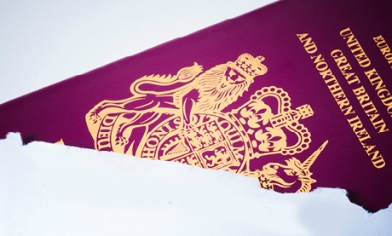What are car insurance groups?
In the UK, every car is placed into one of 50 insurance groups to help work out insurance costs.
This system was first introduced in 1970 and started with just 20 groups. By 2009, it grew to 50 groups. This made it easier to assess cars based on things like how fast they are, how safe they are and how much they cost to fix.
Here’s how it typically works:
- Lower numbered groups, like 1 or 2, are cheaper to insure. These cars are typically smaller, less powerful, and easier or cheaper to repair if something goes wrong
- Cars in higher-numbered groups, such as 49 or 50, are more expensive to insure. This is usually because they’re faster, more expensive or harder to repair
The groups are set by Thatcham Research on behalf of the Association of British Insurers (ABI). They work with a team of experts, made up of members from the ABI and Lloyds Market Association (LMA), and meet every month to review new cars and place them in a group.
What are car insurance groups based on?
Car insurance groups are based on a few key factors, such as:
- Repair and replacement costs
This includes how much it costs to fix the car, the price of replacement parts and how long repairs take. Cars that are cheaper and quicker to fix fall into lower groups. Those with rare or expensive parts, or longer repair times, are placed in higher groups.
- Car value and performance
Expensive cars and high-performance vehicles are usually in higher groups. This is because they cost more to replace and are more likely to be involved in accidents due to their power and speed.
- Safety and security features
Cars with advanced safety technologies or strong anti-theft systems, such as alarms and immobilisers, are less risky to insure. These cars are usually in lower groups. They’re also less likely to cause or suffer major damage in an accident.
- Design and compatibility
Cars with well-designed bumpers or structures that reduce damage in collisions are more likely to be in lower groups. These designs help keep repair costs low.
Why do car insurance groups matter?
Car insurance groups are important because they affect how much you pay for insurance.
As we mentioned earlier, cars in lower numbered groups are cheaper to insure, while cars in higher-numbered groups will cost more. This is because they’re often faster, more powerful and expensive to fix.
If you’re buying a car and want to save money, knowing its insurance group can help. It’s a simple way to narrow down your search and stick to a budget.
What insurance group is my car?
Here’s a quick list of popular car models and their typical insurance groups:
| Car insurance groups | Vehicle make and model |
|---|---|
| 1-10 | Citroën C1, Fiat Panda, Hyundai i10, and Volkswagen Fox |
| 11-20 | Audi A1, Honda Civic, Mini Hatchback |
| 21-30 | BMW 1 Series, Mercedes-Benz A-Class |
| 31-40 | Jaguar XE, Audi Q5 |
| 41-50 | Range Rover, Porsche 911, Tesla Model S |
Please note that the exact group may vary depending on the car’s features, engine size and model year.
These groups are a guide to help you compare cars. It’s always best to check the exact group for a specific car before making a decision. There are various free online tools available which let you search using the car’s registration number or make and model.
What else can affect the cost of my car insurance?
Although car insurance groups play a big role in your premiums, other things can also affect how much you pay. These include:
- Your age and experience: Younger drivers or those over 70 usually pay more because they’re seen as higher risk
- Where you live and keep your car: Urban areas, places with high crime rates or flood risks, for example, can increase costs. Being on the electoral roll might help lower your premiums as it shows stability
- Your driving history: No claims or accidents? You’re likely to pay less than someone with a history of incidents
- How you use your car: What you use your car for can affect your insurance. Driving for it for social or domestic reasons, such as shopping or personal errands, generally costs less than commuting to a fixed workplace. Both of these typically cost less than using your car for broader business purposes, such as making deliveries or driving clients
- Type of cover: There are three main types of car insurance – third-party (the minimum legal requirement), third-party, fire and theft, and comprehensive. Although comprehensive cover often provides the most protection, it’s not always necessarily the most expensive. It’s worth comparing policies from different insurers to find the best deal for you. You can also customise your policy by opting in and out of extras, like breakdown cover, which could add to your costs
How can I lower my car insurance premiums?
If you’re looking to save on car insurance, here are some ways that could help cut costs:
- Choose a car in a lower insurance group: Smaller, less powerful cars are cheaper to insure and repair
- Add extra safety and security features: Alarms, immobilisers or a dashcam can make your car safer and cheaper to insure
- Increase your voluntary excess: Agreeing to pay a bit more if you need to make a claim can lower your monthly costs. Just make sure it’s affordable
- Build up a no-claims discount: The longer you go without making a claim, the bigger your discount gets. This could save you a lot over time
- Drive fewer miles: Fewer miles could lower your risk of accidents and help reduce your premiums. But remember, less time on the road doesn’t always mean fewer accidents, as less experienced drivers may still face risks
- Try a telematics policy: Having a black box or an app-based insurance monitors your driving. If you’re a safe driver, you could pay less
- Add a named driver: Including an experienced driver with a good driving history could help lower costs. But never list someone as the main driver when they’re not. This is illegal and could invalidate your insurance
If you want to save money on your insurance, check your existing policy or to compare quotes from different providers.













